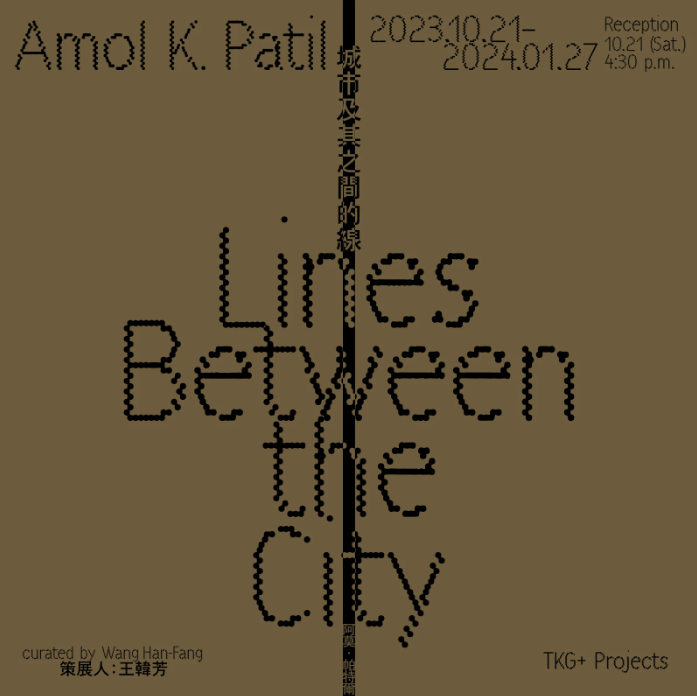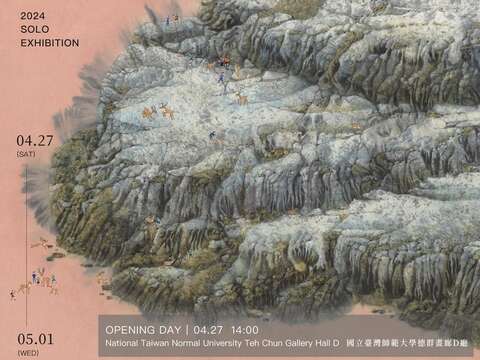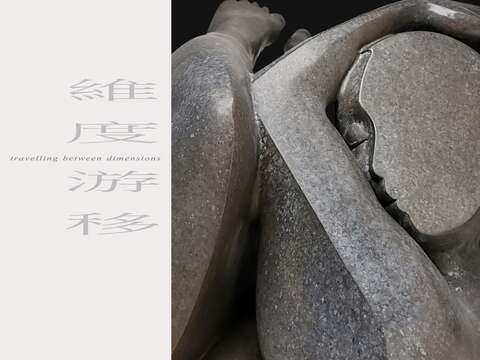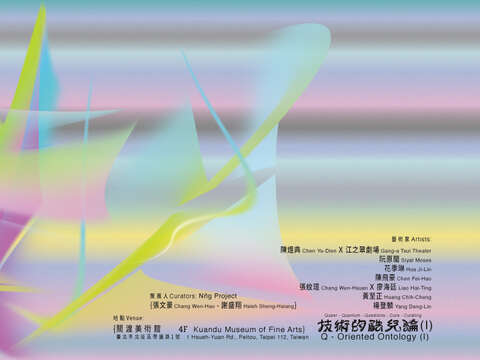Post date:2023-10-18
Updates:2023-10-18
621

- Event Time
- 2023-10-07~2024-01-27Tue.-Sat. 11:00-19:00
- Event Location
- 2F, No. 15, Ln. 548, Ruiguang Rd., Neihu Dist., Taipei City Taiwan, R.O.C
Over the past five decades, Mumbai has been part of a rapid urbanization, with a significant influx of immigrants, urban zoning, towering skyscrapers, and frequent trade activities. The city is growing, expanding, bustling with energy. A fast-growing modern city striving for success usually pursues efficiency, and gravitates toward homogenization. Such a process often leads to the silent marginalization of certain groups, which can be understood as marginalized spaces, populations, or lifestyles within the city. It may also raise issues concerning the management and allocation of public resources. From a broader perspective, it involves the implications of urban sprawl, as well as the relationship between the city and natural environment. These invisible margins with fluid borders evolve in an organic way, serving different purposes, morphing in different patterns, at different speeds, leaving behind myriad intangible lines across the city. It seems these lines function both as partitions and as bedrocks, shaping the face of the city and the lifestyles of its inhabitants. Lines Between the City, Amol K. Patil’s debut at TKG+ Projects, revolves around the everyday life of these fringe communities. Using a demolished wall from a gentrified chawl, the exhibition charts a daily route which the dwellers travel to navigate the city, where issues of caste, class, and labor conditions lurking along unseen barriers confront the marginalized, voiceless groups.
Why do we turn our gaze toward the everyday in this particular exhibition? To quote French sociologist Henri Lefebvre, who wrote in The Critique of Everyday Life (1961), “The human world is not defined simply by the historical, by culture, by totality or society as a whole, or by ideological and political superstructures. It is defined by this intermediate and mediating level: everyday life.” Human social activities are based on everyday life, driven by corporeal needs and desires, influenced at the same time by tradition, politics, family, religion, traffic, environment, and self-actualization. People experience happiness, contentment, or frustration in their daily lives. They also develop local, repetitive, but culturally significant everyday practices, or engage in creative and change-driven forms of counter-production. These work or non-work behaviors create a cycle that constitutes the everyday, expanding into a microcosm of the overall social production system.
The works on view in Patil’s solo exhibition delve not into a grand subject but into an entirely ordinary body. His portrayal of the body creates a dialogue between the corporeal form, living space, and the walls. As the relationship between the body and space shifts, as the body is transformed and reconstructed, this dialogue unfolds sometimes as a pas de deux, at times as a dizzying straight punch. Other times, the body becomes part of the space; still other times, the walls fuse with the skin of the body in a synchronized breath. These abstract, continuous interactions portray the intricate relationship between reality and the human condition. Patil is concerned with humanity’s space in the social environment, as well as the opposition and symbiosis between the body and the surroundings. For him, the marginalized live in a state of oppression, where life is merely a product of the state. Attempts must be made to restore equality and abundance of everyday life; to reclaim autonomy over one’s labor and time; to defy the commodification, commercialization, and pigeonholing of one’s existence; to produce a form of everyday life that belongs ultimately to humanity.
A mercurial city of tens of millions serves as a hub where the citizens, interlinked with each other, spontaneously congregate and disperse. Lines Between the City examines the depths of the everyday, as well as the body as a conduit for connection, along with its impalpable borders. Even the smallest community can create a space of fluidity, allowing for constant change.
Why do we turn our gaze toward the everyday in this particular exhibition? To quote French sociologist Henri Lefebvre, who wrote in The Critique of Everyday Life (1961), “The human world is not defined simply by the historical, by culture, by totality or society as a whole, or by ideological and political superstructures. It is defined by this intermediate and mediating level: everyday life.” Human social activities are based on everyday life, driven by corporeal needs and desires, influenced at the same time by tradition, politics, family, religion, traffic, environment, and self-actualization. People experience happiness, contentment, or frustration in their daily lives. They also develop local, repetitive, but culturally significant everyday practices, or engage in creative and change-driven forms of counter-production. These work or non-work behaviors create a cycle that constitutes the everyday, expanding into a microcosm of the overall social production system.
The works on view in Patil’s solo exhibition delve not into a grand subject but into an entirely ordinary body. His portrayal of the body creates a dialogue between the corporeal form, living space, and the walls. As the relationship between the body and space shifts, as the body is transformed and reconstructed, this dialogue unfolds sometimes as a pas de deux, at times as a dizzying straight punch. Other times, the body becomes part of the space; still other times, the walls fuse with the skin of the body in a synchronized breath. These abstract, continuous interactions portray the intricate relationship between reality and the human condition. Patil is concerned with humanity’s space in the social environment, as well as the opposition and symbiosis between the body and the surroundings. For him, the marginalized live in a state of oppression, where life is merely a product of the state. Attempts must be made to restore equality and abundance of everyday life; to reclaim autonomy over one’s labor and time; to defy the commodification, commercialization, and pigeonholing of one’s existence; to produce a form of everyday life that belongs ultimately to humanity.
A mercurial city of tens of millions serves as a hub where the citizens, interlinked with each other, spontaneously congregate and disperse. Lines Between the City examines the depths of the everyday, as well as the body as a conduit for connection, along with its impalpable borders. Even the smallest community can create a space of fluidity, allowing for constant change.
 AMOL K. PATIL: LINES BETWEEN THE CITY
AMOL K. PATIL: LINES BETWEEN THE CITY








